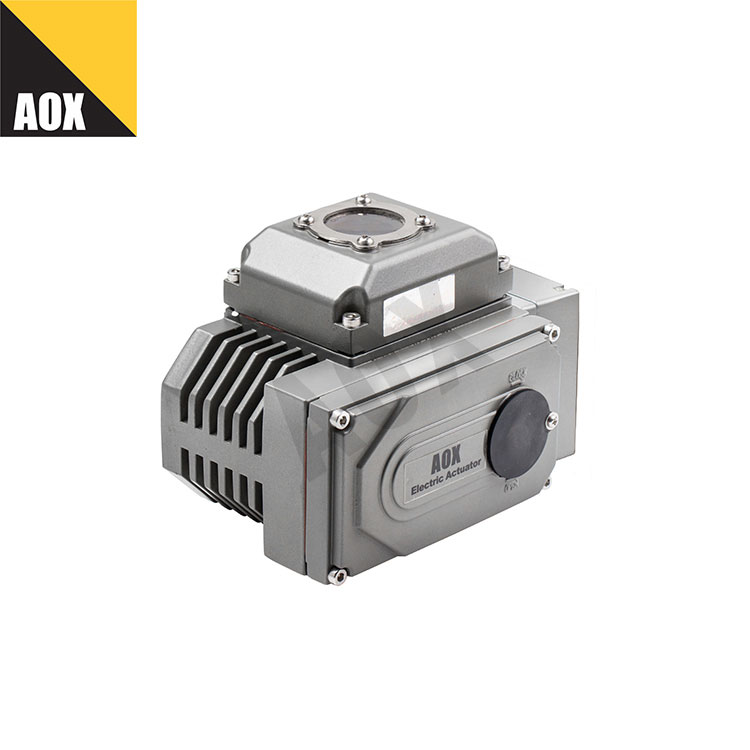
- English
- Español
- Português
- русский
- Français
- 日本語
- Deutsch
- tiếng Việt
- Italiano
- Nederlands
- ภาษาไทย
- Polski
- 한국어
- Svenska
- magyar
- Malay
- বাংলা ভাষার
- Dansk
- Suomi
- हिन्दी
- Pilipino
- Türkçe
- Gaeilge
- العربية
- Indonesia
- Norsk
- تمل
- český
- ελληνικά
- український
- Javanese
- فارسی
- தமிழ்
- తెలుగు
- नेपाली
- Burmese
- български
- ລາວ
- Latine
- Қазақша
- Euskal
- Azərbaycan
- Slovenský jazyk
- Македонски
- Lietuvos
- Eesti Keel
- Română
- Slovenski
- मराठी
- Srpski језик
How do you choose the right Automation Part Turn Electric Actuator for your application?
2024-10-14

How to choose the right Automation Part Turn Electric Actuator for your application?
Choosing the right Automation Part Turn Electric Actuator can be challenging. Here are some of the questions that you need to consider when selecting the right electric actuator for your application.
What is the torque required to turn the valve?
The torque required to turn the valve will determine the Automation Part Turn Electric Actuator's output torque needed. It is essential to select an actuator that can provide enough torque to operate the valve.
What is the valve's size and type?
The valve size and type will determine the mounting configuration and Automation Part Turn Electric Actuator's output torque required to operate the valve. It is essential to choose the correct mounting configuration that will provide a secure and safe installation.
What is the power supply available?
Electric actuators are available in different power supply options, including AC or DC. It is crucial to select the appropriate power supply that will fit your application requirements.
What is the environmental condition?
The environmental condition will determine the type of Automation Part Turn Electric Actuator needed. It is essential to choose an actuator that can work efficiently in the required temperature, humidity, and corrosive environment.
Conclusion
Choosing the right Automation Part Turn Electric Actuator is essential to ensure the proper functioning and reliability of the automation system. Consider the torque needed to turn the valve, valve size and type, available power supply, and environmental condition to choose the appropriate Electric Actuator for your application.
Zhejiang Aoxiang Auto-Control Technology CO.,Ltd is a leading manufacturer of Automation Part Turn Electric Actuator in China. They offer high-quality products that meet the industry's standards. Contact them at zjaox07@zjaox.com for more information.
Scientific Research Papers:
1. Zhang, J., & Li, S. (2020). A Comparative Study of Electric Actuators in Industrial Applications. International Journal of Advanced Manufacturing Technology, 106(7-8), 3287-3297.
2. Wang, X., & Li, J. (2019). Research and Development of a Novel Electric Actuator with High Performance. Automation in Construction, 98, 342-355.
3. Chen, H., & Zhang, Y. (2018). Design and Analysis of Intelligent Electric Actuator Based on Fuzzy Control. IEEE Access, 6, 52384-52392.
4. Han, S. K., & Lee, J. H. (2017). Development of an Intelligent Electric Actuator for Smart Factory Applications. Journal of Manufacturing Systems, 44, 148-159.
5. Wu, X., & Zhang, M. (2016). Dynamic Simulation and Control of High-Speed Electric Actuator for Aerospace Application. Journal of Aerospace Engineering, 29(6), 04015038.
6. Li, X., & Zhao, H. (2015). Design and Simulation of Electric Actuator for Wind Turbine Pitch Control System. Journal of Renewable and Sustainable Energy, 7(1), 013131.
7. Wang, Y., & Ren, H. (2014). Multi-PID Intelligent Control System of Industrial Electric Actuator. Mechanical Systems and Signal Processing, 48(1-2), 149-159.
8. Xiao, J., & Yu, H. (2013). Modeling and Control of High-Power Electric Actuator for Heavy-Duty Application. Journal of Control Science and Engineering, 2013.
9. Wu, Q., & Huang, D. (2012). A Hybrid Intelligent Control System for Electric Hydraulic Actuator in Power Plant. Energy Conversion and Management, 64, 191-199.
10. Liu, Y., & Wang, Y. (2011). Analysis and Optimization of Electric Actuator System for High-Speed Train Brake Control. Journal of Transportation Systems Engineering and Information Technology, 11(4), 119-125.



